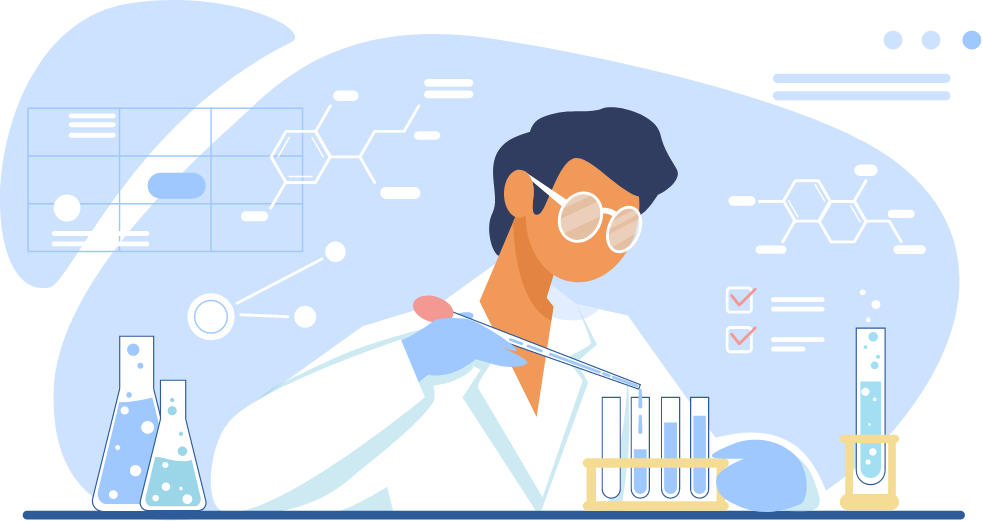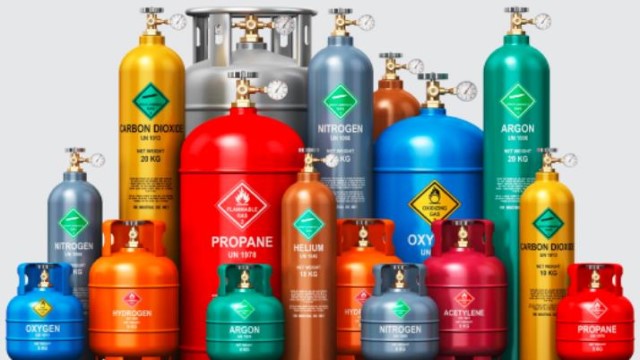

Upskilling Science (online) is a 15 hours module designed as part of our employability project Lakshya, which aims at bridging the gap between academia and industry by sharpening the subject knowledge and work skills of the students to meet industry requirements. This course will help students to get clear understanding of fundamental concepts of both theory and Practical applications along with basic instrumentation aspects of various machines used in industries. This course is ideal for B.Sc. Chemistry students and anyone with science background who is interested in pursuing their career in QA-QC department of any Chemical or Pharma Industries.
TRAINING OVERVIEW

This three-part chapter introduces students to the basic concept of chemistry i.e. 'units' based on the natural world, decimal ratios, prefixes for multiples and sub-multiples, and a structure of base and derived units.
SHOW MORE

In this chapter we cover definition, base & derived SI units, unit systems, unit prefix conversions & equivalence.
PDF DOCUMENTS TEST
In this part we discuss units critical to practicing chemistry in academic, research and commercial environment. Units covered in this part include mass, volume, density, temperature, atomic mass, molecular mass & mole concepts.
PDF DOCUMENTS TEST
This part focusses on more advanced units routinely used in chemistry like molar mass, mass percent of elements, percent by weight, percent by volume, mole fraction, molarity & molality.
PDF DOCUMENTS TEST
This chapter is concerned with the basic concept of chemistry 'normality'. This video defines normality as a concept and specifies the formulas used for the calculation of normality of a given solution. It also discusses at length relevant sub-concepts like equivalent weight, acidity, basicity, valence factor & oxidation number, etc. Impact of hydrous and anhydrous nature of chemicals along with acidity and basicity of medium on gram equivalent mass during chemical reaction is also explained. Finally, distinguishing points between molarity and normality are discussed finally concluding with relationship prevalent between these sister concepts.
PDF DOCUMENTS TEST
This chapter addresses the theory and applications of 'standardisation' and proceeds to engage multitude of relevant topics like primary standard & secondary standard solutions, volumetric analysis/titration, preparation of solutions and standardisation of those acid/base solutions with calculation of normality.
PDF DOCUMENTS TEST
This chapter defines 'purity' and specifies normal and titration formula used to calculate purity. This video also contains a theoretical simulated experiment for preparation of HCl solution and determining its purity.
PDF DOCUMENTS TEST
This video contained theoretical simulated experiments which include preparation of solutions, their volumetric analysis/ titration for the purpose of standardisation and purity calculation of chemical solutions.
PDF DOCUMENTS
This video contains introduction to pH-metry which is a popular instrument used to determine pH (acidity/ basicity) of a given sample. With respect to pH-metry, this video explains principle of operation, practical applications, pH scale, instrumentation of pH meter.
Practical: This video elaborates critical consideration during the pH calibaration and provides step by step instruction to calibrate pH sensor and measure pH of given sample.
PDF DOCUMENTS Practical Video TEST
Karl Fischer titrimetry is an analytical technique used exclusively for determination of water/ moisture content of a given solid, liquid and gaseous sample. In addition to working principle this video describes in details two types (volumetric and coulometric) of Karl Fischer titration along with instrumentation required for titration and end point detection. This chapter also provides understanding of basic Practical procedure for assembly, operation and maintenance of Karl Fischer titrators.
Practical: This video demonstrates the procedure of sample preparation for performing moisture content analysis of an unknown sample using Karl Fischer Titrator (Coulometric Titration).
PDF DOCUMENTS Practical Video TEST
Thin layer chromatography (TLC) is a simple, quick, and inexpensive method to determine how many components are present in a mixture. This video defines chromatography in general and elaborates various branches of chromatography with according to multiple criteria of classification. With respect to TLC this video discusses in detail principle of working, application, advantages, limitations, instrumentation and basic Practical procedure.
PDF DOCUMENTS TEST
High performance liquid chromatography (HPLC) is a, quick, and efficient analytical technique to separate, identify, purify & quantify components present in a mixture. This video discusses in detail principle of working, application, advantages, limitations, instrumentation and basic Practical procedure of a typical HPLC system.
Practical-1: This video demonstrates use of HPLC (High Performance Liquid Chromatography) system with individual components like 'solvent reservoir', 'solvent delivery system', 'sample injection system', 'HPLC column', ' solute detector', 'fraction collection system' and 'data integrator' for separating, identifying and quantifying individual fractions in a chemical mixture.
Practical-2: This video demonstrates the procedure of sample preparation for performing moisture content analysis of an unknown sample using Karl Fischer Titrator (Coulometric Titration).
PDF DOCUMENTS Practical Video 1 Practical Video 2 TEST
This is a two-part video discussion series introducing ‘gas chromatography' (GC). Gas chromatography is the most efficient analytical technique used for separating, identifying, purifying & quantifying components present in a mixture.
SHOW MORE

This part contains elaborate discussion on principle of working, types, & instrumentation of a typical GC system. Components of GC system described in this part are carrier gas, injector system, columns, liquid phases, support materials.
Practical: This video demonstrates the correct procedure to prepare reference standard solution of (ETO) Ethylene Oxide using solvents like DMSO (Dimethyl Sulphoxide) & DMF (Dimethyl Foramide) for use in HPLC (High Performance Liquid Chromatography) to separate, identify and quantify ETO.
PDF DOCUMENTS Practical Video TEST
This part deals with a plethora of detectors used in conjunction with other GC components. Finally, this video is concluded with a discussion of advantages and limitations of GC as an analytical technique followed with a brief summary of all the topics covered under both parts.
Practical: This video demonstrates the use of GC (Gas Chromatography) system and explains the role of each system component in gas chromatography analysis along with its significance.
PDF DOCUMENTS Practical Video
This chapter elaborates the concept of dilution of high concentration liquids and solids to create low concentration liquids and solids. This presentation defines and describes steps to prepare stock solutions. Further liquid dilutions, solid dilutions and alligations calculations are also included specifically with respect to applications in laboratory.
PDF DOCUMENTS